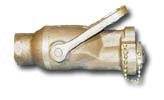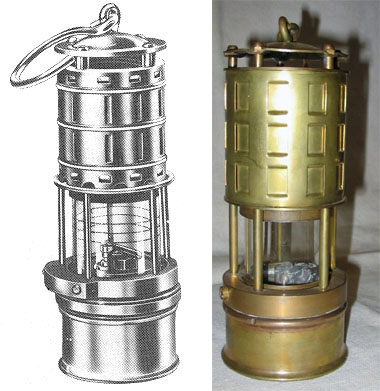 |
 |
 |
 |
| HOME |
| ABOUT US |
| PARTICIPATE |
| COLLECTIONS |
| DC EQUIPMENT MUSEUM |
| SHIP&SUBMARINE MUSEUM |
| WW II DAMAMGE REPORTS |
| SHIPBOARD CASUALTIES |
| DAMAGE CONTROL MUSEUM | |
|
USS TRIPOLI (LPH 10), Mine Explosion, 18 February 1991 |
|
|
Tripoli Keeps on Ticking
Tripoli crewmembers and shipyard workers inspect the mine damage. Standing before a crew of heroes, six surface warriors aboard USS Tripoli (LPH 10) were decorated for their leadership during the crew's gallant efforts to save the ship after it struck an Iraqi moored contact mine in the northern Arabian Gulf in the early hours of 18 February 1991. LCDR Stephen M. Senk, CWO2 Van C. Cavin and DCC(SW) Joseph A. Carter were awarded the Silver Star; and ICC(SW) Robert W. Murphy, GMGC(SW) William A. Werley, and AO2 David J. Witt were awarded the Bronze star by RADM S.S. Clarey, Commander Amphibious Group THREE, in a ceremony aboard Tripoli after she returned to San Diego in October. CAPT J.R. Hutchinson, Tripoli's CO, told the assembled crew and guests that the awards presentation was a once-in-a-lifetime event. "Most probably, never again will you witness the presentation of three Silver Stars and three Bronze Stars to six true American naval heroes. Men like these, and the men standing here in the ranks, make us all proud to be Americans." The force of the ine blast ripped a 20-by-30-foot hole in the starboard side of the ship, 15 feet below the waterline and carried up through several decks, blowing hatches off their openings and twisting stell plating. It caused structural damage to a paint locker, the 3-inch caliber deep ammo magazine and the brig. In Tripoli's engineering spaces, the boilers were secured in response to the force of the blast and the emergency diesel generators came on line restoring vital power throughout the ship. In the forward part of Tripoli, the inrushing sea water quickly flooded several auxiliary spaces. The explosion destroyed several fuel tanks, as well as the flammable liquid storeroom (paint locker), vaporizing hundreds of gallons of volatile paints and fuel, and creating a cloud of potentially explosive vapors which filled the entire forward section of the ship - a single spark could have detonated the fumes, destroying the bow and with it any chance of saving Tripoli. Several crewmen were forced to move aft by the concentrated fumes, prompting the evacuation of the majority of the forward repair locker personnel. Even those who remained behind with oxygen breathing apparatus were able to smell the vapors through their masks. Firemain-driven ventilation "Ramfans," received onboard only two weeks earlier as part of the Navy's non-developmental item program, were set up to rapidly remove the fumes. As the extent of the damage was assessed, the decision was made to hold the line at Frame 26. This main bulkhead provided the ship with the greatest degree of protection from progressive flooding and the resulting loss of buoyancy and stability. Repair teams continued to plug small leaks through this bulkhead in several lower compartments, including one magazine which had to be emptied first. The forward emergency diesel generator was lost to the rising water, leaving the entire forward portion of the ship without power or lighting. In the engineering plant, quick reactions by the watch team restored a boiler, the main engine and normal power in little more than an hour.
Tripoli was fully capable of defending herself and capable of continuing her airborne minesweeping operations while continuing to stabilize the damage. Almost four hours after striking the mine, damage control efforts stoppd all progressive flooding and stabilized the bulkhead to the point that the ship could move slowly. Not wanting to rely solely on the already shored but still weakened bulkhead at Frame 26, the damage control team's effort shifted to the bulkhead at Frame 31 and a massive shoring effort continued through the night. For LCDR Senk, Chief Engineer at the time of the mine strike, the Silver Star recognizes the tireless teamwork and total dedication to duty that each Tripoli crewmember displayed that day. "It's always nice to be recognized by your peers, but this is an award that can be shared by all 600 men who were aboard Tripoli that morning," LCDR Senk said. "Their actions allowed me to make some decisions, and they deserve a lot of the credit." To those who were aboard during the mine strike, LCDR Senk's composure, leadership and sense of humor rallied the crew to control flooding and limit damage, allowing Tripoli to continue minesweeping operations for five more days. He organized the quick relighting of the ship's boilers, and, in order to assess damage, repeatedly re-entered damaged areas which were under continuous threat of explosive vapors. DCC(SW) Carter was awarded the Silver Star for his effective leadership in directing repair parties to control the flooding. He, too, repeatedly entered damaged spaces to look for injured men and to assess damage. CWO2 Cavin, the ship's Damage Control Assistant, received the Silver Star for his leadership in directing damage control teams that quickly established and maintained flooding boundaries, limiting damage and allowing Tripoli to continue her combat operations. He, too, risked his life by leading the damage control efforts. When the mine strike occurred, ICC(SW) Murphy restored vital communications circuits and combat systems by rigging casualty power to the forward switchboard, enabling Tripoli to continue her combat mission. Tripoli's Leading Chief Gunner's Mate, GMGC(SW) Werley, entered the damaged magazine first to assess damage and begin dewatering efforts, then worked for 30 hours to organize and supervise the removal of 1,000 3-inch 50 caliber rounds and more than 100 cases of small arms ammunition - all under the threat of additional flooding, weakened bulkheads and explosive vapors. AO2 Witt, a Damage Control Petty Officer, donned an Oxygen Breathing Apparatus (OBA) and entered the forward magazine, which was flooded with seawater, jet fuel and paint thinner. He, too, worked for 30 hours straight - despite the constant threat to his life from explosive vapors and weakened bulkheads - to stop progressive flooding and supervise dewatering of the spaces. The awardees were quick to point out that, although they are proud of their awards, hundreds of crewmen worked alongside them after the mine strike. "Hero is a nice name," said ICC(SW) Murphy, "but that day, everybody was a hero." "I don't feel like a hero," said AO2 Witt, "I was just doing my duty." According to the Navy Awards Manual, the Silver Star is awarded for an heroic act that renders an individual conspicuous and well above the standard expected. The Bronze Star is awarded to any person who distinguishes himself by heroic or meritorious achievement above what is normally expected, and performs his tasks above those who perform comparable duties. The honored name Tripoli, emblazoned in the Marine Corps Hymn, evokes an image of gallantry and heroism to which the Tripoli heroes have made a present-day contribution. |
|

